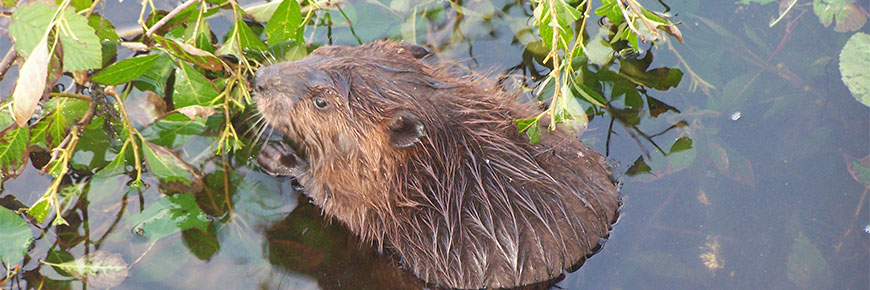Mammals
Prince Edward Island National Park
Red foxes (Vulpes vulpes)

One of our most commonly seen PEI National Park residents, the red fox can range in colour from red to black. While you may see a variance in the colours of PEI National Park foxes, including black, red and mixed, they are all classified as red foxes and have white tips on the ends of their tails, whatever the colour phase. During breeding season, PEI foxes use dens dug into the ground and breeding pairs produce between 4 and 9 kits in the springtime.
Playful and curious, red foxes can be seen in all areas of the park throughout the year. As tempting as it may be to attempt to attract them, we remind visitors that feeding wildlife, including foxes, is against the law in Canada’s National Parks. While they may seem kind, hand-outs are harmful as they lead to the foxes positively associating humans and vehicles with food. This lack of fear for vehicles has led to an increase in fox-vehicle collisions and mortalities.
In addition, foxes are opportunistic feeders and very skilled hunters. PEI National Park provides ample natural food resources such as snowshoe hares, rodents, insects and berries. They simply don’t require supplemental food sources. It is important to keep our wildlife wild!
For more information, please visit: Visitor guidelines
Marine mammals

Harp seal.
As a coastal park, the PEI National park shares many kilometers of shore lines with the Gulf of St. Lawrence. Marine mammals that reside in the Gulf of St. Lawrence include:
- Grey seal (Halichoerus grypus)
- Harbour seal (Phoca vitulina)
- Hooded seal (Cystophora cristata)
- Harp seal (Pagophilus groenlandicus)
- Harbour porpoise (Phocoena phocoena)
- Atlantic white-sided dolphin (Lagenor hynchus acutus)
- Pilot whale (Globicephala melas)
- Minke whale (Balaenoptera acutorostrata)
While boating in the waters off shore of the PEI National Park, it isn’t uncommon to see some of these species popping up above the surface for a quick breath of air, or spouts of water coming from the blowhole of a dolphin or whale.
Visitors may also occasionally come across deceased marine mammals who have washed up on our beaches. While sometimes these carcasses can be unpleasant to experience it is important to note that this is a natural process and can have many positive impacts on local organisms as a food and nutrient source.
We encourage visitors to report all sightings of deceased marine mammals to our Parks Canada Dispatch at 1-877-852-3100 so that trained individuals can be notified and can further access the situation. Under some circumstances, we will work with our partners at the Atlantic Veterinary College to investigate causes of death.
Snowshoe hare (Lepus americanus)

Snowshoe hare are very abundant in PEI National Park, and are most commonly found along the trails, appearing brown in summer and white in winter. They love to eat grasses and clover, and in winter, the shoots of newly-planted trees. Wooden stakes and plastic fencing have been placed around many trees for protection in such cases.
Other common mammals

Beaver.
Beavers (Castor canadensis) and muskrats (Ondatra zibethicus) are often found in wetlands, while along the trails you might hear the chatter of red squirrels (Tamiasciurus hudsonicus) or spot an eastern chipmunk (Tamias striatus) in the tree roots.
Related links
- Date modified :